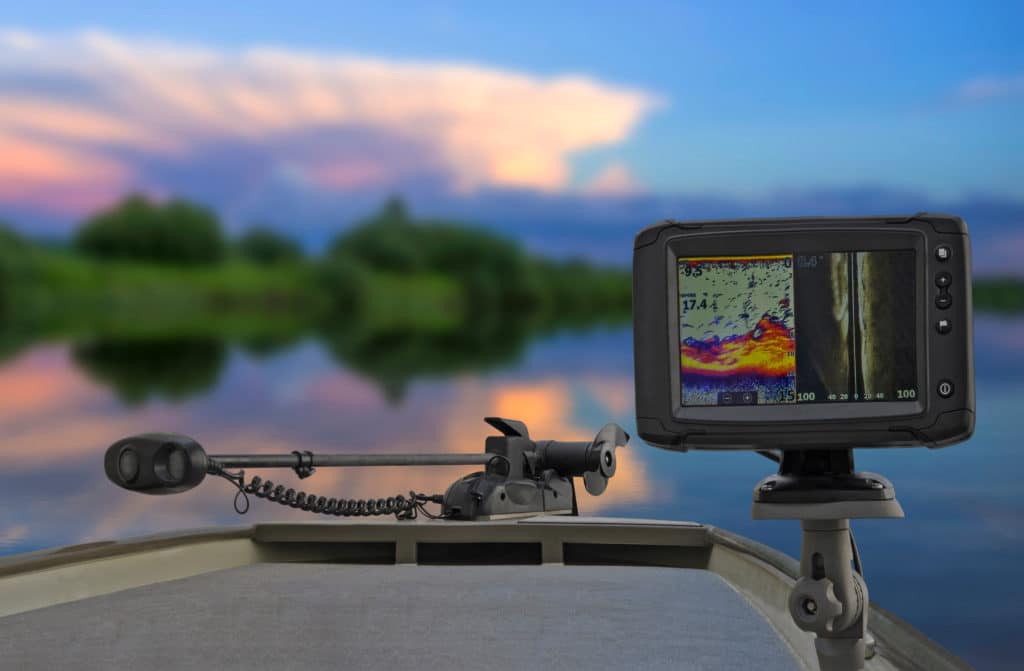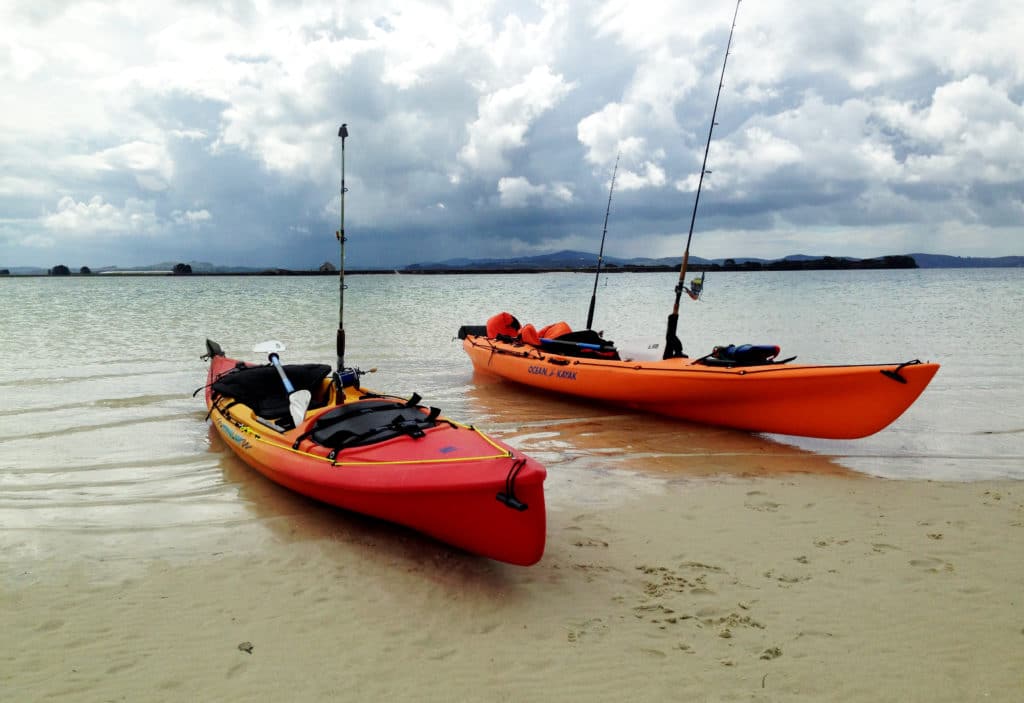For anglers, there is nothing more frustrating than setting up for a day of fishing only to come back empty-handed because the spot they chose was too dense with vegetation or underwater structures.
One of the most useful fishing or angling technology items available today that can really up your fishing game is a fish finder.
Easily installed on boats or kayaks, they can help map out a body of water and find those tricky hiding places.

Contents
What is a Fish Finder?
A fish finder might seem like just another gadget, but it is really so much more.
Using sonar and sound waves, it is able to map out the body of water and create a “picture” (sonar images) of what is going on beneath the water’s surface.
The sound waves emitted by a fish finder bounce off objects like fish, rocks, vegetation, etc., and return the signal to the unit.
This is helpful in determining water depth, schools of fish, and any objects that might be in the way of the angler and his catch.

Why Every Angler Should Use a Fishfinder
There are so many advantages when it comes to using a fish finder.
With a wide variety of functions and features, using a fish finder can improve your fishing game and increase your odds of landing a better catch. Here are a few:
- A fish finder can be used in all water depths, water temperatures, and in any weather pattern
- Has a speedometer to help you keep track of your speed, which could possibly scare fish away
- Comes with a side-scan function, allowing you to locate fish on either side of the boat or kayak
- Built-in zoom
- Fish alarm function that alerts you to the presence of fish
- Easy to use icons
- Simple to install
- Great for all types of fishing and for monitoring fish activity
How to Install a Fish Finder on a Fishing Kayak
Before installing a fish finder, it might be handy to check if the kayak has capabilities to support the technology or if you would need to customize the kayak.
Modern fishing kayaks have built-in gear tracks and compartments for a fish finder but do not fret if your kayak does not.
It is pretty simple to rig your kayak to support a fish finder.
There are three components to a fish finder.
- The head unit or display unit
- The transducer
- The battery or power source
Let’s take a brief look at these components, as well as how to install them for the best functionality of your fish finder.
The Display Unit or Head Unit
When installing your head unit, it is important to consider the perfect placement.
Ideally, it should be within reach but also out of the way.
The unit is available in a variety of sizes, from roughly 3 inches, up to 12 inches.
As mentioned, modern kayaks have gear tracks already installed, but you can modify your kayak hull to accommodate a fish finder by installing gear tracks on any flat area.
Most anglers install their head or display unit on the center console or the side of the footwell, keeping it neatly in place yet out of the way.
When placing your head unit or fish finder display, it is important to keep in mind that you will need to run cables from the unit to the transducer and power source or battery.
The Transducer
The transducer acts as the brain of the fish finder and is what sends out the sound waves or sonar to detect fish or any other structures beneath the surface of the body of water.
It is also said to be one of the trickiest pieces to rig up to your kayak, and careful consideration must be taken to ensure that the return signal is not muffled or weakened due to placement.
There are three popular places to install your transducer:
- Special Scuppers
- Pods
- Wells
These are found in most fishing kayaks and are designed to hold the transducer of a fish finder.
When installing the transducer, place it in the cockpit of the kayak, making sure the bottom of the transducer is in line with the bottom or base of the kayak.
It needs to be installed in a flat spot.
This keeps the unit out of your way but within easy reach should you need to make any adjustments.
For ease of use, consider using a removable mount that will not only keep your transducer safely in place but is easy to remove for storage when not in use.
And, once again, keep in mind the various cables and wiring you will need to run from your head unit to the transducer and from the transducer to the power source.
The Battery
The battery is undeniably one of the most important components of a fish finder, as it powers the entire system.
Most fish finders run off a 12-volt battery that is available in a variety of sizes and weights, depending on the type of fishing kayak you have.
The battery should be stored on the inside of the kayak, preferably in a waterproof bag or customized box, to keep it clean and dry.
Keeping a battery dry is vitally important to prevent any shorts.
The power cable can be run through a waterproof gland or through a hole you have drilled through the body of the kayak.
You can create a waterproof seal for the wiring of your battery by sealing any open areas around your wire with silicone.
Choosing a Fish Finder
There are things you need to keep in mind when choosing a fish finder.
The most important factor is, of course, your budget.
The more you have to spend, the better the pixelation of the display and the more detailed image, functions, and features of the fish finder, which in turn guarantees a bigger catch.
Depending on how much you are willing to spend, even cheaper models have great features that can help you map out a body of water and locate a school of fish just waiting to be caught.
Conclusion
A fish finder is quite possibly one of the trickiest pieces to install on your fishing kayak.
Still, it is a serious game-changer and can significantly increase your chance of locating and catching the fish you are looking for.
Modern fishing kayaks are available with pre-installed equipment to hold a fish finder, but you can make minor modifications to your current kayak to hold all the necessary pieces.







